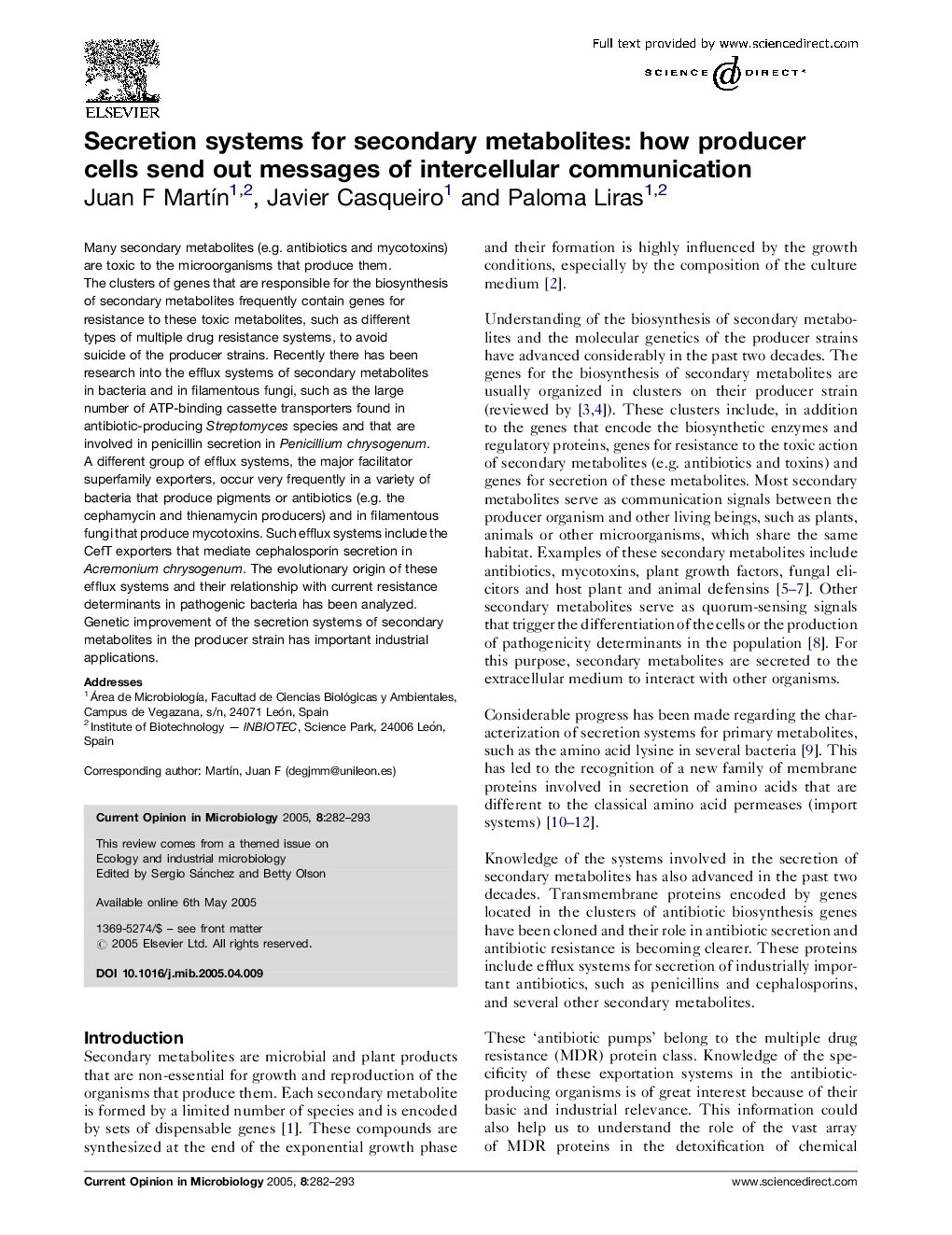| Article ID | Journal | Published Year | Pages | File Type |
|---|---|---|---|---|
| 9276635 | Current Opinion in Microbiology | 2005 | 12 Pages |
Abstract
Many secondary metabolites (e.g. antibiotics and mycotoxins) are toxic to the microorganisms that produce them. The clusters of genes that are responsible for the biosynthesis of secondary metabolites frequently contain genes for resistance to these toxic metabolites, such as different types of multiple drug resistance systems, to avoid suicide of the producer strains. Recently there has been research into the efflux systems of secondary metabolites in bacteria and in filamentous fungi, such as the large number of ATP-binding cassette transporters found in antibiotic-producing Streptomyces species and that are involved in penicillin secretion in Penicillium chrysogenum. A different group of efflux systems, the major facilitator superfamily exporters, occur very frequently in a variety of bacteria that produce pigments or antibiotics (e.g. the cephamycin and thienamycin producers) and in filamentous fungi that produce mycotoxins. Such efflux systems include the CefT exporters that mediate cephalosporin secretion in Acremonium chrysogenum. The evolutionary origin of these efflux systems and their relationship with current resistance determinants in pathogenic bacteria has been analyzed. Genetic improvement of the secretion systems of secondary metabolites in the producer strain has important industrial applications.
Related Topics
Life Sciences
Immunology and Microbiology
Microbiology
Authors
Juan F MartÃn, Javier Casqueiro, Paloma Liras,
